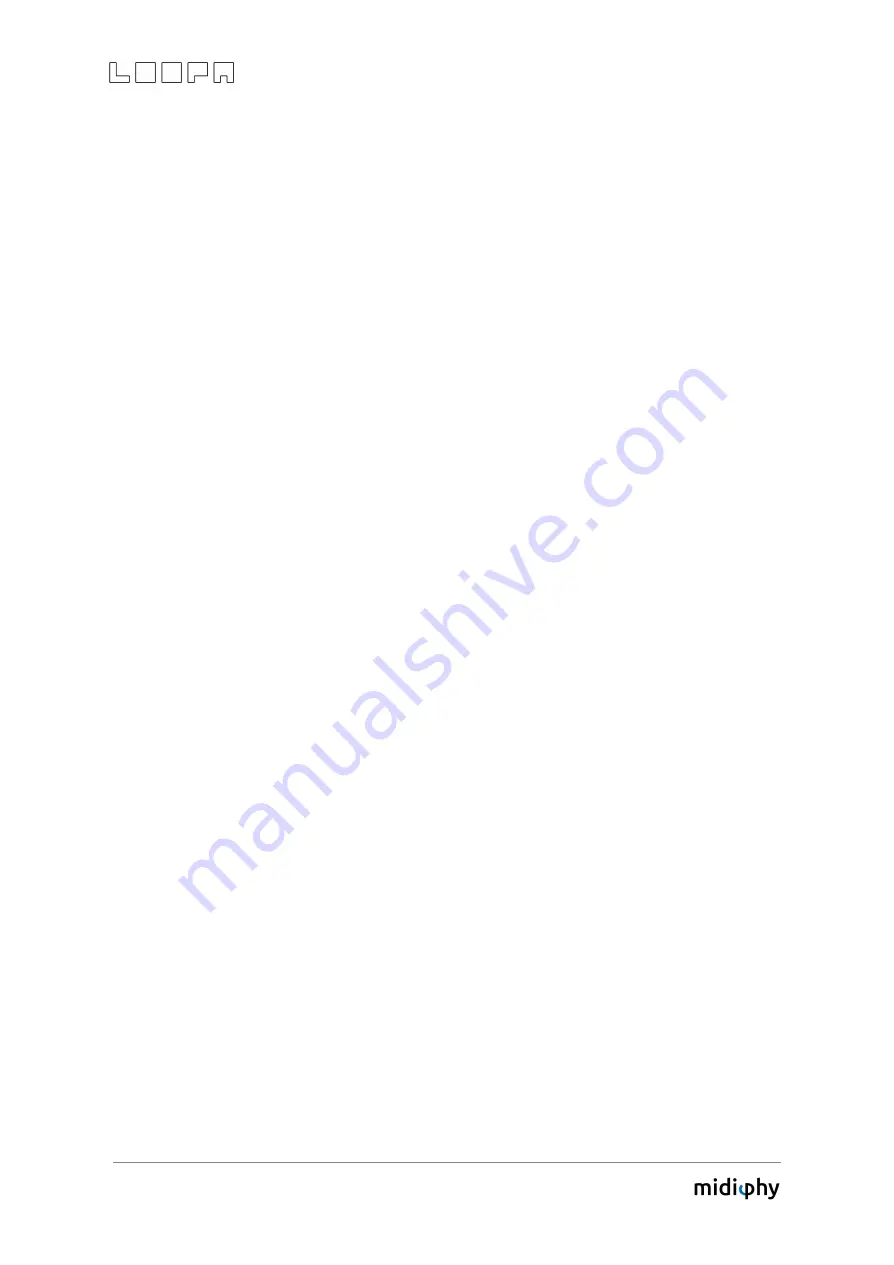
4
3. Quickstart
The following steps get you jamming pronto!
If you get stuck somewhere, please read through the “Menu Usage and LoopA Screens”
chapters. These describe every action on each screen in much more detail.
1.
Insert a FAT32-formatted SD card into the SD card slot to avoid the diagnostics
mode, which is mostly useful to test hardware functions during the build.
2. Attach your LoopA to your favourite synth (synth MIDI OUT to LoopA MIDI IN1 and
LoopA MIDI OUT1 to synth MIDI IN)
3. Attach a USB B cable to power up your LoopA (you could use a mobile USB charger,
a USB power bank, or just a USB port from your computer)
4.
After starting up LoopA, the first track is selected and unmuted (the upper-left key
is illuminated blue-green = cyan) and ARM is activated (2nd key in the lower row is
illuminated red), we are thus already set up to record a sequence on Track 1
5.
Press and hold the MENU key (it might be labeled with a “burger symbol” icon) and
push the lower rightmost key to access the TRACK configuration screen, then
release both keys, and you see the TRACK screen.
6.
Push the second upper-row key to activate the “MIDI Output Channel” selector and
use the VALUE knob to choose the MIDI channel of your synth
7.
Using the Menu, go back to the MUTE Screen and press RUN/STOP to start the
sequencer. The time cursor starts moving, the current track (step or 16th
note-equivalent) positions in the lower part of the display are updated
8. While the sequence is running, play a few notes, try to match the blinking beat LED
on the RUN/STOP key - when the sequence loops, you should hear the recorded
notes in (currently) unquantized playback. If you are unhappy with your current
recording, you can press DELETE (lower right key) at any time to start over.
9. Use the lower-left track knob to choose a different active track and watch the blue
active-track indicator move across the top six keys. Potentially adjust the output
MIDI settings in the TRACK screen as before.
10. Repeat recording a secondary sequence (e.g. a bassline), which will be stacked on
top of the playback of track 1.
11. At any time, have a look in the NOTES, CLIP and LIVEFX screens to modify your
recording - here you could delete or modify single notes, transpose the whole clip,
requantize, apply swing and randomness, change the length of your clip, change
the playback speed of notes, time-scroll notes and do many other things! :)
12. Attach more synths (also software synths can be directly driven via the virtual USB
MIDI ports) and set them up in the TRACK screen. The “live forward” feature there
allows to forward any notes you play on your main keyboard to the configured MIDI
OUT port/channel of the currently active track, so you could listen to e.g.
rackmount synths when using a separate MIDI keyboard for recording.




















